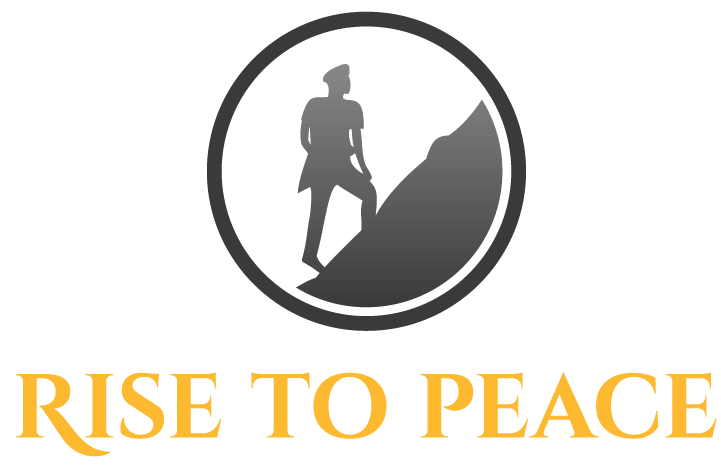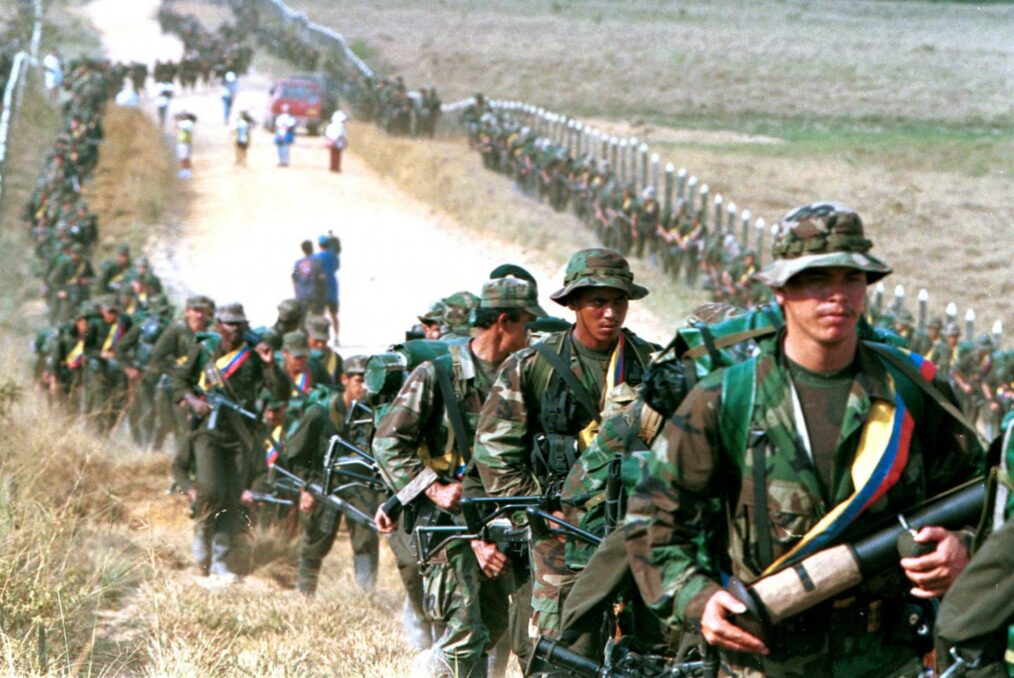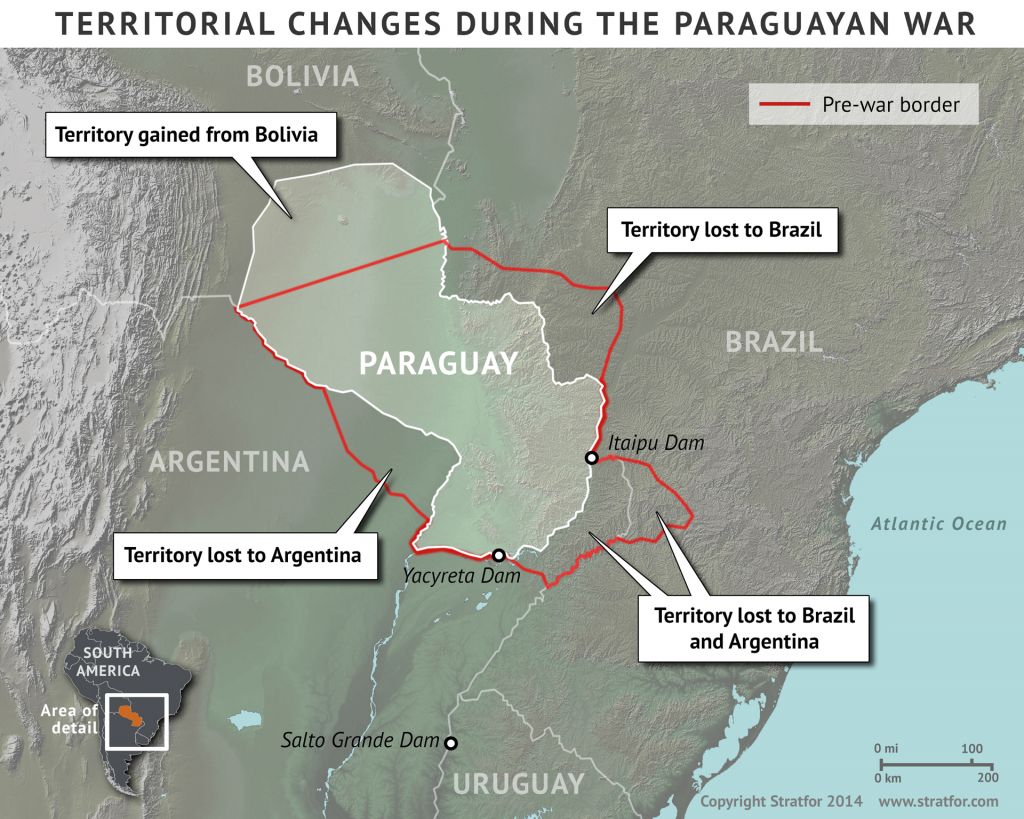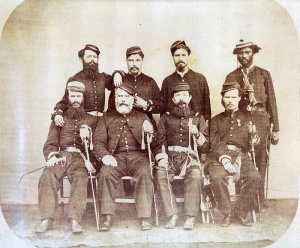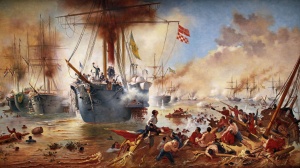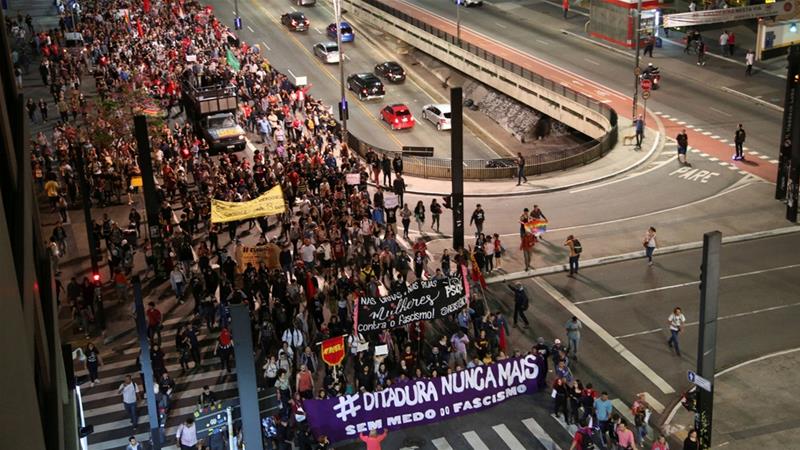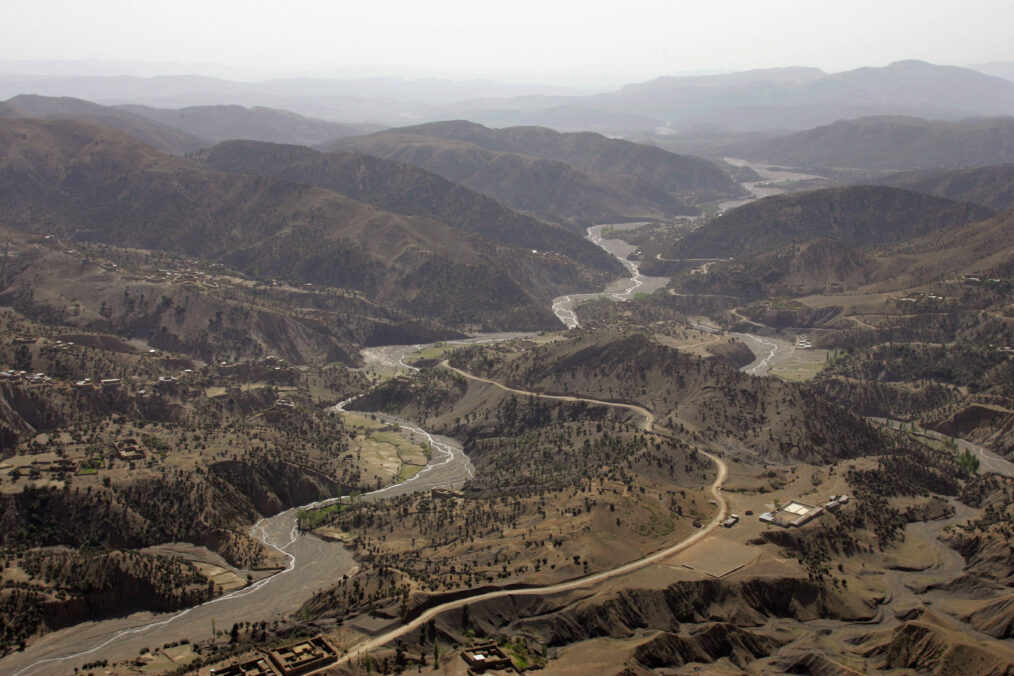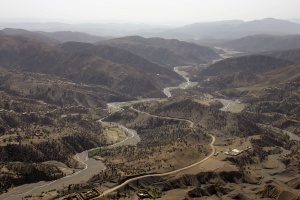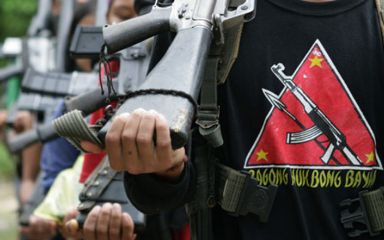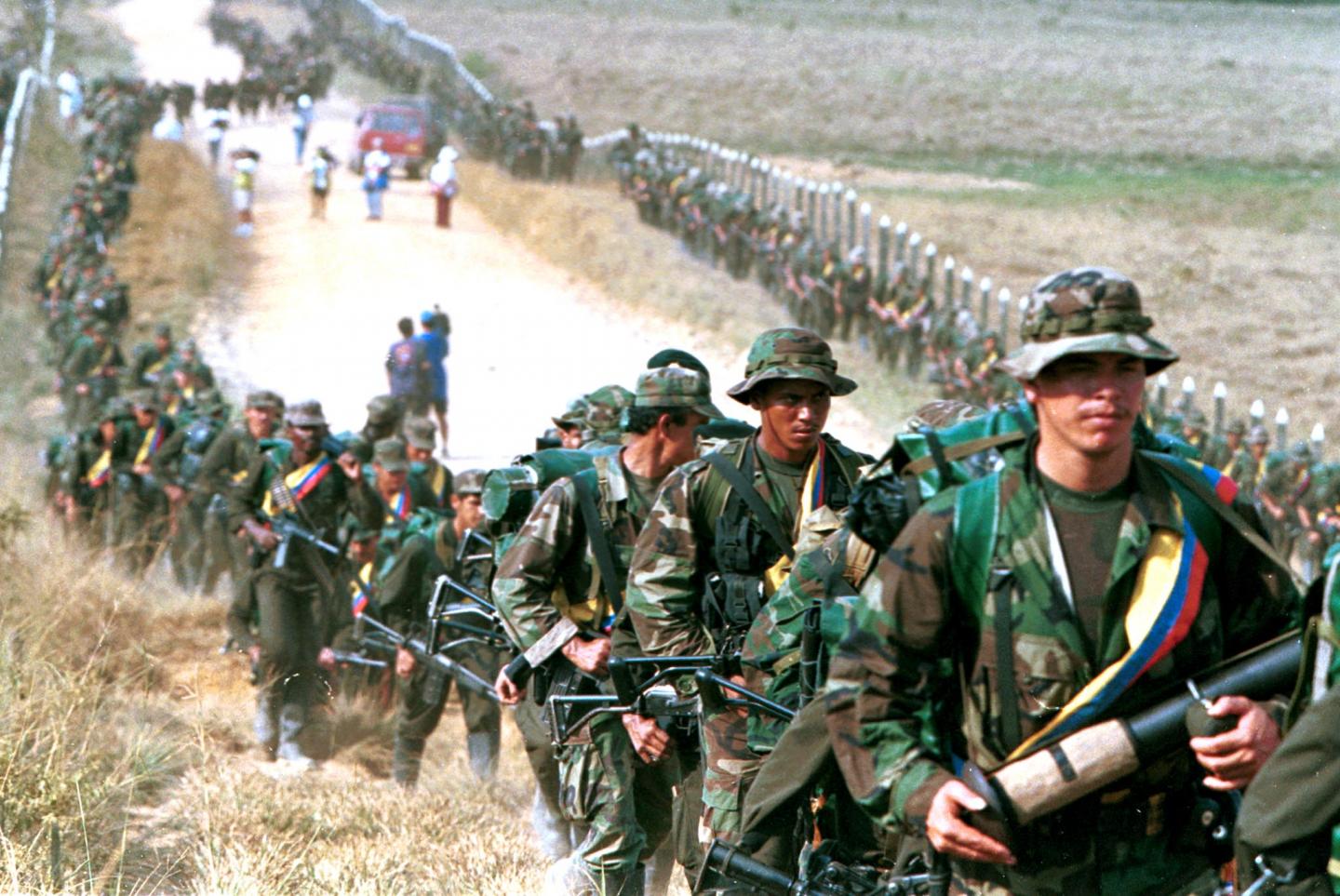
Leftist rebels of the Revolutionary Armed Forces of Colombia patrol a roadway near to San Vicente de Caguan in January 1999. The conflict with the FARC has killed nearly a quarter million people.
JOSE GOMEZ/REUTERS
The 21st-century has been one of the more peaceful epochs in human history. People are bombarded with violent images and tragic news, but this century has borne witness to dramatic peace. Rampant violence defined epochs from Pax Romana to the Middle Ages through the Napoleonic Era.
World Wars and the Cold War marred the 20th-century. In this century, international wars have diminished. And in the shadows, violence has oriented to non-state actors and civil conflicts. The young 21st-century saw the end of two conflicts which had lasted for decades: the Korean War and the Colombian Civil War between FARC, Revolutionary Armed Forces of Colombia, and the government. This piece, in keeping with themes regarding Latin America, will discuss outcomes of the Colombian peace deal.
The Peace Accord in Colombia was signed on November 24th, 2016 and it won incumbent Colombian President Juan Manuel Santos a Nobel Peace Prize. Talks had developed over four years, beginning in Oslo, Norway and Havana, Cuba in 2012. In the short-term, the peace-talks resulted in disarming many FARC members, a decrease in violence, and a more coordinated political system wherein FARC has legitimate representation. More than 12,000 former combatants have pledged to return to society. Businesses such as Coca-Cola and Cemex have agree to hire former insurgents and run re-integation programs. The internal displacement rate has been reduced by a multiple of 30, and casualties have dropped from 3,000 at the beginning of the peace accords, to 10 at the end.
The death toll has climbed to more 120 human rights defenders in 2017 alone.
We can rightfully call this a success. But Colombia’s situation remains touch-and-go at best. When FARC agreed to the deal, other insurgent groups increased their presence, particularly in the countryside. Small groups such as the National Liberation Army (FNL), refused to negotiate with the government and remain active in such areas. Said groups have filled the power vacuum left when the government failed to extend its presence to areas where FARC controlled territory.
The struggle for control has led to conflicts between the smaller groups and the local population. Unfortunately, native, afro-Colombians, and human rights defenders have suffered disproportionately. Consequently, such populations are protesting peace accord details and urging the Colombian government to step in. The death toll has climbed to more 120 human rights defenders in 2017 alone.
The Santos government earned criticism when it failed to bring the peace deal before a plebiscite, and instead presented it to the Colombian Congress.
Another challenge lies in understanding the proposed agrarian reforms. Land rights have been at the heart of the Colombian conflict since the 1950s. FARC often loomed in the jungles so companies could not grab land belonging to indigenous communities. Newly elected president, Ivan Duque Marquez, sees the land restitution part of the Peace Accord as an attempt to bring socialism to Colombia. However, Marquez and his party have opposed the Peace Accord since the start.
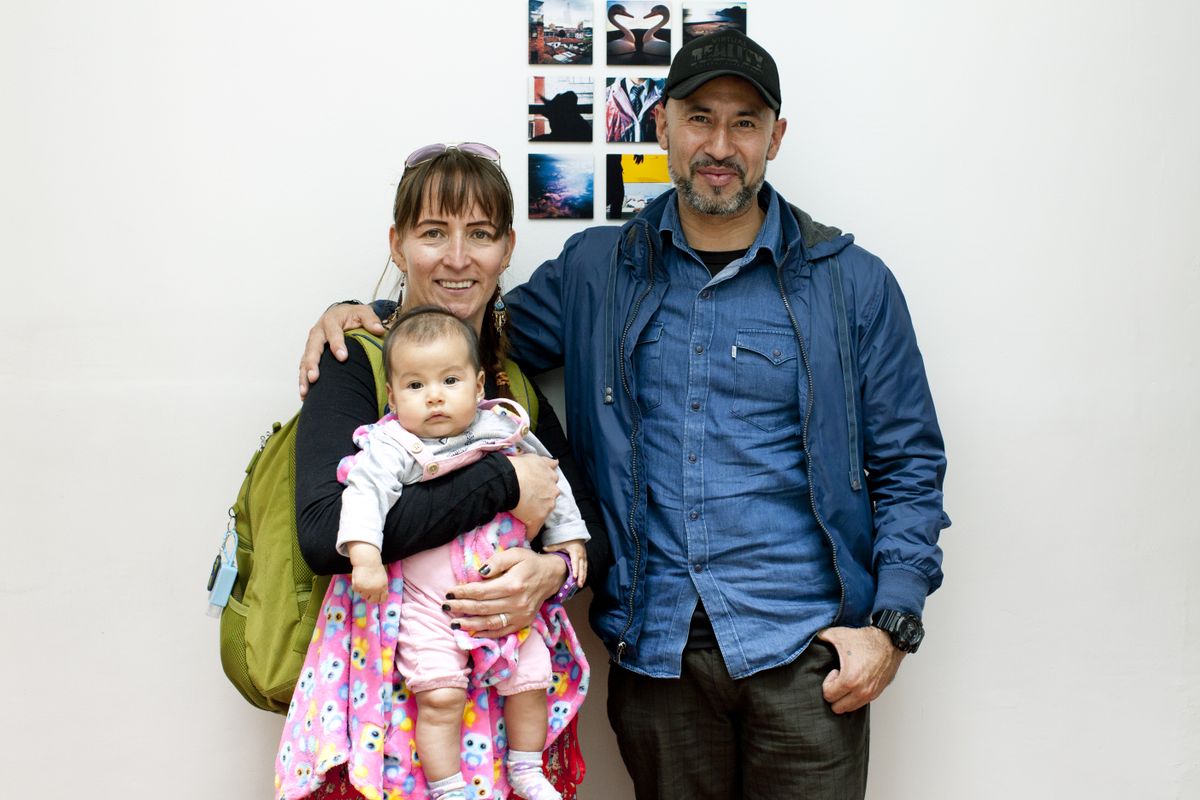
Former FARC guerrillas Nasly Rodriguez and Gregory Villarraga – shown at a Bogota art gallery with their baby daughter — are among the many families who have had to adapt to new jobs and lives after the rebel group’s demobilization last year. CARLOS VILLALON/THE GLOBE AND MAIL
Given Venezuela’s turmoil, many rightfully fear that socialism will take Colombia down the same path. Finally, the Santos government earned criticism when it failed to bring the peace deal before a plebiscite, and instead presented it to the Colombian Congress.
The situation in Colombia reminds us that peace is not achieved by signing papers. Rather, it’s earned through sustained hard work, dialogue, and mutual trust. Making peace is a delicate process that requires more than stopping armed conflicts. Creating a sustainable peace requires political will and follow-through, working within existing institutional structures, and coordinating with civil society organizations.
Santos failed to exercise the requisite will and follow-through. He did not promptly increase the State’s presence in conflict zones. Additionally, the government failed to act in the interests of marginalized and vulnerable populations. It failed to provide indigenous and poor, rural farmers with necessary aid. Finally, there was a failure of proper public consultation, which is vital for democracy. Other nations should learn from Colombia’s mistakes, and the next peace process, wherever it occurs, should be a model of inclusivity, transparency, and be approved of by its population. Political will should carry the day from conflict zone to reconstruction.
Roberto Malta is a Brazilian born, George Mason University student pursuing a B.A. in Global Affairs, with minors in History and Economics.
